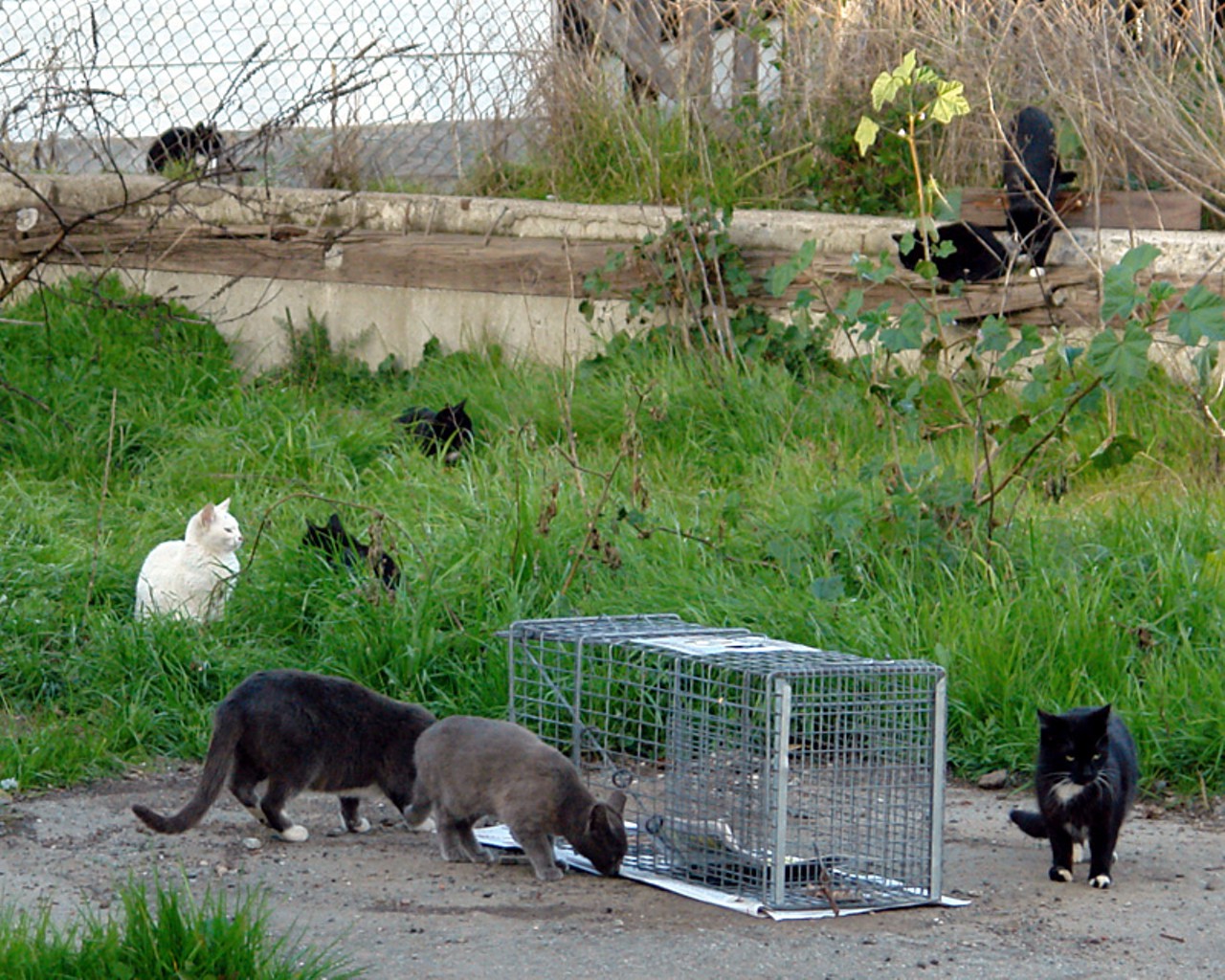 I once was the ‘field services’ guy for a private shelter near Seattle. The staff was a combination of rabid animal rights people, clueless little old ladies in tennis shoes and people who were thrust into that job because they had no other skills. I was given the task of trapping out two feral cats at Ivar’s Salmon House in the U district in Seattle. It took about five weeks. First, the cooks threw out salmon for the cats. Second, I could only
I once was the ‘field services’ guy for a private shelter near Seattle. The staff was a combination of rabid animal rights people, clueless little old ladies in tennis shoes and people who were thrust into that job because they had no other skills. I was given the task of trapping out two feral cats at Ivar’s Salmon House in the U district in Seattle. It took about five weeks. First, the cooks threw out salmon for the cats. Second, I could only  get there about twice a week. Third, I only got one of them. The pregnant female got away. A total waste of time. However, I happened to know of a partial solution and have attempted many times over the years to get it implemented – including telling about 500 directors and shelter managers when I was the main speaker at a major humane conference. So far, no takers. Continue reading
get there about twice a week. Third, I only got one of them. The pregnant female got away. A total waste of time. However, I happened to know of a partial solution and have attempted many times over the years to get it implemented – including telling about 500 directors and shelter managers when I was the main speaker at a major humane conference. So far, no takers. Continue reading
When to say “NO”, literally
 When I worked in shelters I was bitten twice by six-week-old kittens and a Chihuahua pinked my little finger nail. Doing what I do now I have three pin-hole marks on the top of my left hand – meaning the dog bit and I was able to relax my hand so that the teeth didn’t come together – no wound on the underside of my hand. In all that time I have only had one real bite. It is insignificant for most of the reasons you might consider and very significant in a couple of other areas.
When I worked in shelters I was bitten twice by six-week-old kittens and a Chihuahua pinked my little finger nail. Doing what I do now I have three pin-hole marks on the top of my left hand – meaning the dog bit and I was able to relax my hand so that the teeth didn’t come together – no wound on the underside of my hand. In all that time I have only had one real bite. It is insignificant for most of the reasons you might consider and very significant in a couple of other areas.
Continue reading
How Things Work:
When I was a young man, working in the humane movement, I was offered mounds of information about dogs. It seemed that I was the one person on the planet who was ignorant of the beasts. Every person I talked to seemed to have a great-uncle, aunt, cousin or sister who was a master dog trainer. The various great nephews and nieces would announce their familial relationship, swell up with pride and tell me the secret to understanding the canine psyche. I soon learned to either listen politely to these gems of canine lore or wear protective gear. People who know everything about dogs have very short tempers. Continue reading
Fear, Terror and Pain: Your Best Friends in a Hostile World
There is a new television series called, Naked and Afraid. The basic premise is that they drop two people into a hostile part of the world and they have to survive for 21 days.  Each survivalist gets to take a single item with them. This is usually a machete or a technological fire starter. However, they are taking the most important survival tools inside their skulls. The keys to survival, from a jungle in Columbia to a Walmart parking lot, are the abilities to be scared and feel pain.
Each survivalist gets to take a single item with them. This is usually a machete or a technological fire starter. However, they are taking the most important survival tools inside their skulls. The keys to survival, from a jungle in Columbia to a Walmart parking lot, are the abilities to be scared and feel pain.
If  you doubt this, consider the following quote – “About one in a million people are thought to be born without a sense of pain, which results in severe self-inflicted injuries from an early age and can lead to premature death.” Duh. Imagine walking barefoot on sharp rocks and not being able to sense that you are cutting yourself to ribbons. Imagine walking right up to a jaguar and not being afraid. The absence of correct reactions to fear and pain often lead to premature death. You can take that to the bank or the graveyard – your choice.
you doubt this, consider the following quote – “About one in a million people are thought to be born without a sense of pain, which results in severe self-inflicted injuries from an early age and can lead to premature death.” Duh. Imagine walking barefoot on sharp rocks and not being able to sense that you are cutting yourself to ribbons. Imagine walking right up to a jaguar and not being afraid. The absence of correct reactions to fear and pain often lead to premature death. You can take that to the bank or the graveyard – your choice.
Continue reading
The “Treatless Click”
I was at the post office the other day, when a man walked up and laid a package on the counter. He touched the artificial voice box at his throat and asked the clerk how much it would cost to mail the package. The clerk weighed the package and then asked “Would you prefer Express or Priority?” The man with the artificial voice box was slow in reaching up to his neck, and did not answer instantly. The clerk again said “Do you want Express or Priority.” The man touched his communicator and croaked out “Priority.” Over the next few minutes, the routine was repeated several times — the man taking extra time to speak because of the apparatus — the clerk repeated himself, automatically, even though he could see why the man hadn’t answered promptly. The clerk was offering an operant behavior, on a “Fixed Interval” schedule of positive reinforcement.
Continue reading
